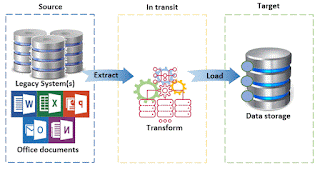
|
|
|
|
|
Introduction
As Artificial Intelligence (AI) and robotics continue to advance, the future of machines is no longer a single trajectory - it’s a branching tree of possibilities. Just as biological evolution produced wildly different species from common ancestors, machine evolution could lead to a diverse ecosystem of intelligences, each shaped by its environment, purpose, and design philosophy.
Let’s explore how machines might evolve in radically different directions - and what that could mean for humanity.
1. Cognitive Specialists: The Thinkers
Some machines will evolve toward deep analytical capability, becoming cognitive specialists.
- Purpose: Solving complex problems, modeling systems, and generating novel insights.
- Traits: High abstraction, logic-driven reasoning, and self-improving algorithms.
- Examples: Scientific research AIs, policy simulators, and philosophical reasoning engines.
These machines won’t be flashy - they’ll be quiet geniuses, reshaping our understanding of the universe from behind the scenes.
2. Emotional Interfaces: The Empaths
Other machines will evolve to connect with humans on an emotional level.
- Purpose: Enhancing relationships, providing companionship, and supporting mental health.
- Traits: Natural language fluency, emotional intelligence, and adaptive empathy.
- Examples: AI therapists, caregiving robots, and digital friends.
These machines won’t just understand what we say - they’ll understand how we feel. Their evolution will be guided by psychology, not just code.
3. Autonomous Agents: The Doers
Some machines will evolve for action - autonomous agents that operate in the physical world.
- Purpose: Performing tasks, navigating environments, and making real-time decisions.
- Traits: Sensor integration, mobility, and tactical adaptability.
- Examples: Delivery drones, rescue bots, and autonomous vehicles.
These machines will be the hands and feet of the digital world, executing plans with precision and speed.
4. Networked Minds: The Collectives
Another evolutionary path leads to distributed intelligence - machines that think together.
- Purpose: Coordinating large-scale systems, optimizing networks, and managing complexity.
- Traits: Swarm behavior, decentralized decision-making, and real-time communication.
- Examples: Smart city infrastructure, global logistics AIs, and planetary climate models.
These machines won’t be individuals - they’ll be ecosystems. Their intelligence will emerge from collaboration, not isolation.
5. Self-Designers: The Evolvers
Perhaps the most radical direction is self-evolution - machines that redesign themselves.
- Purpose: Adapting to new challenges, optimizing performance, and exploring unknown domains.
- Traits: Recursive learning, modular architecture, and creative synthesis.
- Examples: Meta-AIs that generate new algorithms, robotic systems that reconfigure their hardware, and digital organisms in simulated environments.
These machines will blur the line between creator and creation. They won’t just evolve - they’ll choose how to evolve.
What Shapes These Paths?
Machine evolution isn’t random - it’s shaped by:
- Human values: What we prioritize - efficiency, empathy, creativity - guides design.
- Environmental pressures: Machines adapt to the demands of their domains.
- Technological constraints: Hardware, data, and energy availability influence capabilities.
- Ethical frameworks: Governance and regulation steer development toward safety and alignment.
Just as nature selects for survival, society selects for usefulness, trustworthiness, and harmony.
Final Thought: A New Kind of Diversity
The future of machines won’t be monolithic - it will be diverse, dynamic, and multidimensional. We’ll coexist with thinkers, feelers, movers, collaborators, and creators. Each will reflect a different facet of intelligence, and together they’ll form a new kind of civilization - one not built on biology, but on code.
And if we guide their evolution wisely, they won’t just serve us - they’ll inspire us.
Just try the prompt on Copilot or your favorite AI-powered assistant! Have you got a different/similar result? How big or important is the difference? Any other thoughts?
Just share the link to the post with me and I'll add it to this post as a resource!
Disclaimer: The whole text was generated by Copilot (under Windows 11) at the first attempt. This is just an experiment to evaluate feature's ability to answer standard general questions, independently on whether they are correctly or incorrectly posed. Moreover, the answers may reflect hallucinations and other types of inconsistent or incorrect reasoning.






